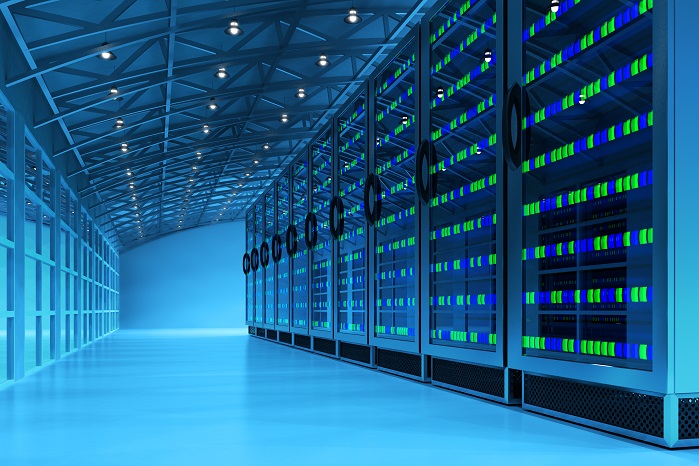My three-hour trek up I35 from Austin to Dallas finally allowed me the time to gather my thoughts and reflect on this year’s Supercomputing extravaganza. Rather than slogging through paragraphs of what I saw this year, I decided to condense my thoughts into highlight bullets. Here goes…
.: Thanks go out the the SC08 committee members. Great show!
.: Lots of interesting viz this year. GraphStream in HPCMO’s booth, SGI, SciViz, NCSA, Boston and many more had lots of cool displays with lots of cool content.
.: Commercializing the NLR. DarkStrand made an appearance at SC…. and why not!? The bandwidth is there, lets use it!
.: Place your bets! The Top500 horse race is in full swing. Lots of changes again for this list. Keep an eye out for hints of fun for the next list, unveiled at ISC.
.: Cluster Challenge participants, great job! We’ll be announcing the full results soon. Regardless of who came out on top, all of you are winners in my book. We’re looking at the next bright shining stars in high performance computing.
.: SiCortex looked bigger and stronger. No longer just a startup and maybe an industry contender. [please, not Rocky jokes]
.: Convey Computer’s neat design. Can’t wait to see what else they have in store.
.: Everyone has an NVIDIA desktop supercomputer product. Show me something differentiated.
.: Despite financial woes, AMD made a splash.
.: Neat giveaways this year. Platform Computing had the raunchiest shirts, NCSA had coloring books [btw, my daughter loves it], SpectraLogic had “Petaflops”, NASA had some wicked cool posters and yours truly had stickers!
.: I think the biggest story of the year was the user participation. The global economy isn’t very healthy, yet the turnout was strong.
Overall, I really enjoyed the show this year. I’m more exhausted this year than in years past. I hope to see everyone again next year in Portland for SC09.




I had never been to Austin and I have to say I absolutely loved the city. What a great town! Most college towns I’ve been to are too much about the college, Austin had the right balance I think.
As to the conference, I’d say it was a great success. My only disappointment was that even though, as you say, there were a lot of visualization products on the floor, there weren’t any remote visualization products unless I completely missed them (Mind you, as big as the floor was, thats a distinct possibility)
But the big presence of nVidia gear is a herald of yet another shift in the HPC business. We went from big iron, to many commodity boxes, now shifting toward many GPUs. Fun stuff and the industry is healthy despite the hard economic times.
Anyway, I think the sc08 committee did a wonderful job and I’m looking forward to sc09!
I think the comment,
“Everyone has an NVIDIA desktop supercomputer product. Show me something differentiated.”
is a bit flippant. You’re not seeing the forest from the trees. As an industry we’re seeing a change. More than just a few companies are offering hardware with massive amount of computational power that can be on the user’s desktop. The fact that we’re seeing more than one company doing this, at least to me, indicates that the market is large enough to warrant the development and sale of such machines. To me this is a sea change of potentially huge proportions.
It’s easy to find a company offering a one-off, the market is full of them. But finding several companies that see a large enough market to warrant the development of a desktop system despite the fact that other companies may be doing the same thing, is something I think is remarkable.
So I think you are missing the point by just looking for differentiation between vendors. I understand the quest for differentiation but as I first said, I think you are missing the forest from trees.
An equal example are clusters. Cluster vendors all use the same CPUs, chipsets, memory, networking, etc. While people are looking for differentiation between vendors (“Why IBM as opposed to HP?”) I think we should also be saying, “Wow, all these vendors are doing similar things so there may be something here.” It’s kind of a glass half-full vs. a glass half-empty analogy.
Jeff, I would have to agree that the emergence of support via third-party OEMs is a great step for NVIDIA and HPC as an industry. I remain a real advocate of NVIDIA’s push into our niche. They have arguably developed the biggest breakthrough in accelerator technology in recent history with the release of a simple, yet powerful parallel programming paradigm. Kudos to NVIDIA one-hundred percent. Kudos to those who have helped the cause along the way with coursework, debugging and tutorial sessions.
That being said, let me qualify my statements above. What I don’t want to see happen is a flood of “me-too” vendor organizations claiming incredible application speedups out-of-the-box with Tesla [et.al.]. I feel this could quite possibly have a dulling effect on NVIDIA’s technology. Mass marketing of a product is a good thing. It drives a great competitive atmosphere between vendors. However, the differentiation I yearn for is a qualification by the vendors that Tesla/CUDA is not simply a silver bullet, but a great tool on the road to better computational platform.
I apologize for sounding a bit ‘half-empty’. I simply want everyone [vendors and users alike] to fully understand the implications of a Tesla-driven compute platform.